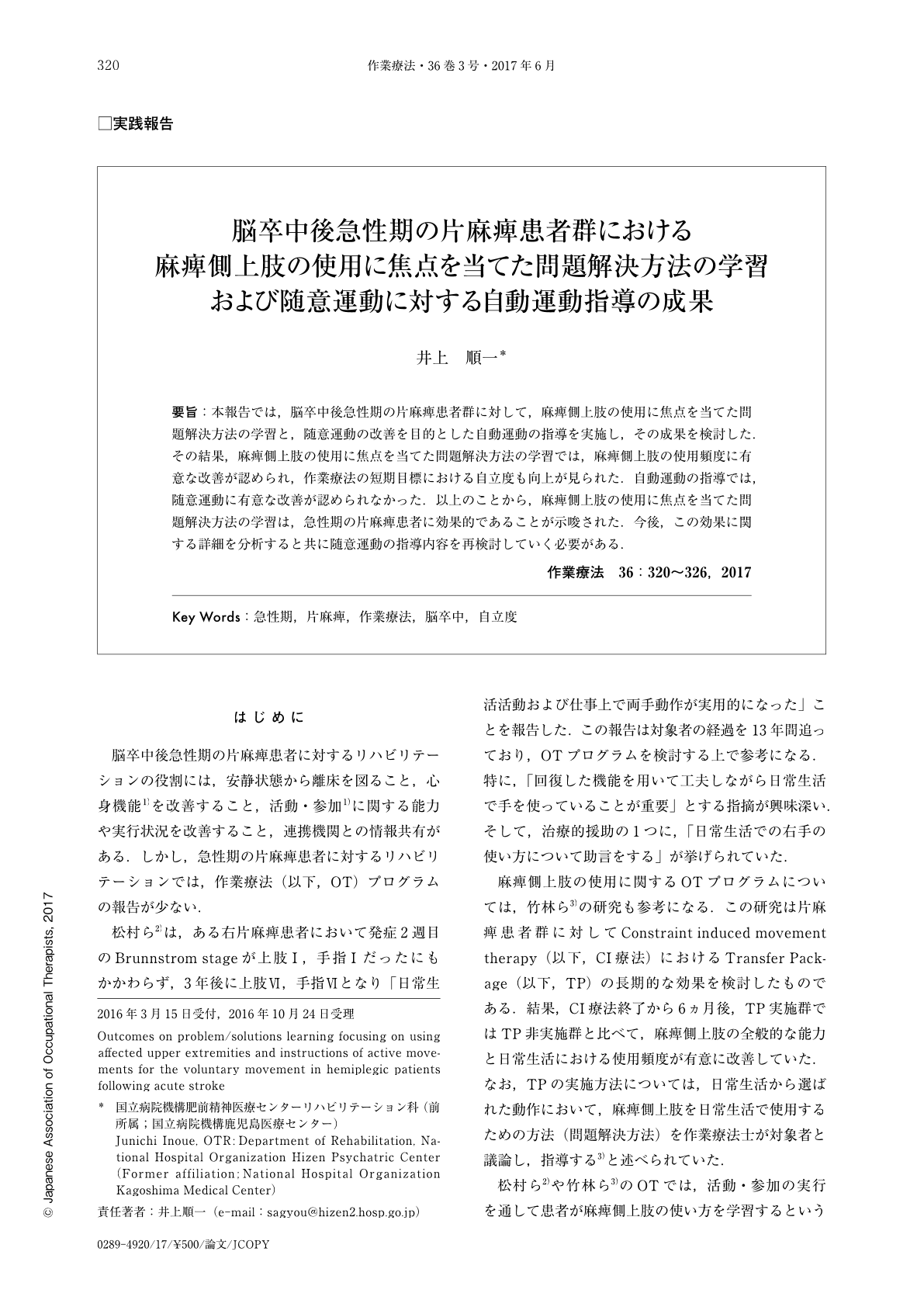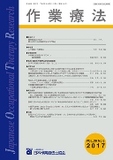Japanese
English
- 販売していません
- Abstract 文献概要
- 1ページ目 Look Inside
- 参考文献 Reference
要旨:本報告では,脳卒中後急性期の片麻痺患者群に対して,麻痺側上肢の使用に焦点を当てた問題解決方法の学習と,随意運動の改善を目的とした自動運動の指導を実施し,その成果を検討した.その結果,麻痺側上肢の使用に焦点を当てた問題解決方法の学習では,麻痺側上肢の使用頻度に有意な改善が認められ,作業療法の短期目標における自立度も向上が見られた.自動運動の指導では,随意運動に有意な改善が認められなかった.以上のことから,麻痺側上肢の使用に焦点を当てた問題解決方法の学習は,急性期の片麻痺患者に効果的であることが示唆された.今後,この効果に関する詳細を分析すると共に随意運動の指導内容を再検討していく必要がある.
This report describes two occupational therapy programs for patients with hemiplegia following acute stroke and considers the outcomes of each program. The first program worked with patients' acquisition of problems and solutions focusing on the affected upper extremity, and the second instructed patients in active movements to improve the voluntary mobility of the affected upper extremity. The analysis of the problem/solution group revealed significant improvement in the both the amount of use of the affected upper extremity, as well as the short term goal of increased patient independence in each activity. However, the 12 grade score indicates that significant improvement in voluntary movement of upper extremities was not observed in the patients undergoing active movement instructions. The results suggest that the learning of problem/solutions that focused on using the affected upper extremity was effective for patients with hemiplegia following acute stroke. Future studies require more detailed analysis on the effect of the learning of problem/solutions that focused on using an affected upper extremity. Furthermore, OT instructional contents of active movements for the voluntary movement will be reconsidered.

Copyright © 2017, Japanese Association of Occupational Therapists. All rights reserved.


